Museums and Exhibitions in New York City and Vicinity
| Home | | Museum Guide | | International | | Architecture and Design | | Theater |
GLENN LONEY'S MUSEUM NOTES
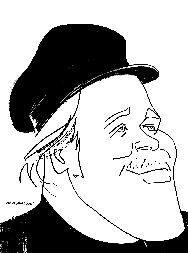
|
|
|
Caricature of Glenn Loney by Sam Norkin. |
|
ON THE OUTSIDE, BUT OCCASIONALLY LOOKING-IN: *
DOCUMENTA and SOME OTHER EUROPEAN SUMMER-SHOWS *
Photo-Archiving Architectural-Façades vs. Inspecting Museum-Interiors: *
HESSIAN KASSEL: Hercules without a Head and Documenta 12 w/o a
Heart! *
DECADE BY DECADE IN MÜNSTER: Sculpture Projects '07! *
BREGENZ ON THE BODENSEE: Angelika Kauffmann and Some Moderns! *
Celebrating Angelika Kauffmann! *
MYTHOS Beside the Bodensee: *
Kunsthaus-Bregenz Showcases Beuys and Barney and Twombly and Gordon! *
QWIK-STOP IN BERLIN: The Story of Berlin—Mit Original Atomshützbünker! *
ON-VIEW AT THE GROPIUS-BAU: Cindy Sherman and Scythian Gold! *
NEW IN MUNICH: Jüdisches Museum München! *
OLD IN MUNICH: Max Krug, Cuckoo-Clocks! *
FRIEDRICHSHAFEN-AM-BODENSEE: The Zeppelin-Museum! *
Stop-Over in Prague: Historic Churches and Monasteries as Virtual-Museums
and Performance-Venues: *
IN WIEN: Specialist-Museums and Collections Briefly-Noted! *
Sigmund Freud Museum: *
Arnold Schönbeg Center: *
Möbel Museum Wien: *
Technisches Museum Wien: *
Gemäldegalerie der Akademie der bildenen Künste Wien: *
Österrechische Nationalbibliothek: Prunksaal: *
BEYOND THE VIENNA-WOODS: Stift Kloster-Neuberg and the Essl-Museum! *
Kloster-Neuberg: Where Heaven and Earth Meet; Faith, Wine, and Culture
on Vienna's Doorstep! *
Essl Museum's Kunst der Gegenwart! *
VARIETY IN FESTIVE SALZBURG: Baroque, Rococo, and Modern Share the Stage! *
Dom-Museum zu Salzburg: Ewald Mataré in Salzburg: *
Dommuseum zu Salzburg: Wunderkammer and More! *
Salzburger Barockmuseum: Versailles—The Gardens of the Sun-King! *
Salzburg's Residenzgalerie: Die Schöne und das Ungeheuer! *
MUSEUM DER MODERNE SALZBURG: *
MdM MÖNSCHBERG and RUPERTINUM: Jan Fabre, Sammlung Mahjong, and
Klimt to Krystufek! *
MdM RUPERTINUM: Klimt to Krystufek + Jan Fabre: The Invested Time! *
Translating Jan Fabre: *
IN LONDON AT THE TATE-MODERN: *
Dalí and Film! *
Hélio Oiticica: The Body of Color *
Hockney on Turner Watercolours *
ON THE OUTSIDE, BUT OCCASIONALLY LOOKING-IN:
DOCUMENTA and SOME OTHER EUROPEAN SUMMER-SHOWS
Photo-Archiving Architectural-Façades vs. Inspecting Museum-Interiors:
Frequent and even Occasional-Readers of Your Scribe's necessarily superficial reports on Museum and Galley exhibitions may be aware that his Primary-Interest—over more than half-a-century—is the Archival-Photographing of important and interesting Historic Buildings, Monuments, and Sites that might well be destroyed or obliterated in World War III or IV, depending on how you may be counting them…
As often previously-noted, when Your Scribe first arrived in Western-Europe—fresh from a life entirely spent in Bucolic-California, where the adobe-bricks of many of Padre Junipero Serra's 18th Century Franciscan Missions were still melting in the torrential winter-rains—he was appalled to survey the devastation wrought by American and British Pattern-Bombing on such cities as Hamburg, Cologne, and Frankfurt-am-Main.
Landing at the US Air Force Base in Frankfurt in 1956—where all seemed very Stateside—he soon entered a darker and damaged world in the historic city, where once the Holy Roman Emperors were Elected. This was a decade after the Second World War had been won, but bomb-damage was still strewn around. The ancient façades of Die Römer were still in ruins.
We had scored a direct-hit on [Johann Wolfgang] Goethe's House. But it was being re-built as it once was, for the Germans had always been very good about measuring and marking—as well as photographing—every inch or centimeter of their historic buildings and monuments.
So I photographed what was going-forward, as well. Including the restoration of the Grand Wilhelmian Façade of the Hauptbahnhof. Not to overlook impressive new modern structures, sprouting from the bomb-ruins.
I even took a few shots of what had been the HQ of the famed I G Farben AG works in Frankfurt. This complex had not been bomb-targeted! The reason, I was told, was that the American Military wanted it intact for the HQ of EUCOM, or the European Command. Later, I learned that JP Morgan interests had a substantial stake in Farben Chemical-Industries, even in the Nazi-Period, so, naturally, we would not want to destroy American-Investments abroad…
Even at this time, I thought of what I was doing—with my Kodak Retina 3C—only as Archival or Informational photography. No whiff of Art or Artistry was involved, as I was a college-professor, not an Artist. To be an Artist, I thought, required a certain Attitude about oneself, not to mention an Agent and a Gallery to represent you.
Over time, trying to explain what I was doing—"Why don't you take any pictures of People?"—I frequently referred to the fast-multiplying-images as only Info-Photography. The next step was obviously to name the burgeoning photo-archive INFOTOGRAPHY.
This past June, I was finally granted a trademark-designation: INFOTOGRAPHY™.
There are now well over 300,000 photos: slides, bandw and color-prints, as well as digital-images. Over the past 15 years, I have been labeling slides and prints, organizing them in acid-free photo-pages, arranging them in specific photo-volumes, and indexing each photo, each page, and each volume on the computer. The Computer-Index is now understandably Voluminous.
Most of these volumes are now in storage, as I have no Archive-Museum space in which to preserve them. Or to make them available on-site or on-line to interested Students, Researchers, Editors, Authors, Artists, or Designers, who might find their range and variety extremely useful.
At one point, I offered the entire INFOTOGRAPHY™ Collection—to which I continue to add images from my travels, as well as my daily explorations around New York City—to the New York Public Library, at Fifth and 42nd. This was going forward until—thanks to the Bush Administration's slashing of Federal Subsidies for major Research-Libraries—the NYPL not only could not service the Collection, but it could not even afford to open its doors on Mondays!
Now the extensive Collection is the province of the not-for-profit Lightning New Media—which unfortunately also has no funding for an INFOTOGRAPHY™ Arts-Archive.
At this writing, I am at a Total-Loss how to proceed, as more INFOTOGRAPHY™ volumes of go into storage. Even if I had sold the INFOTOGRAPHY™ Collection to Bill Gates' CORBIS or to Getty Images, they would have probably disappeared into the endless stacks of shelving, never to emerge again.
Nonetheless, the Info-photography continues. This summer, Your Scribe was in Hamburg, at the invitation of John Neumeier, for the Hamburg Ballet's Annual Festival. Although I had first photographed Hamburg in 1956—when there were still bad Bomb-Scars, from the devastating Fire-Storm that destroyed the Heart of this great port-city—in Summer 2007, I still found historic-details I had previously missed in many visits over the years.
But—together with being at the Ballet every evening and reporting about its productions and its dancer-training—I didn't have any free-time to spend at length IN the city's many fine Museums and Galleries. Only a few photos of handsome archive-quality Exteriors were possible.
That was also true of almost all of the other cities Your Scribe visited: Prague, Berlin, Vienna, Munich, Bregenz, St. Gallen, Innsbrück, Salzburg, Kassel, Edinburgh, and London. Despite the number of important exhibitions on view in Berlin, I had time only to photograph the Interiors of the historic Martin-Gropius-Bau.
And that was only possible—the museum-guards are fierce about preventing interior-photos from being made—because I was commissioned by the Berlin Film Festival to photograph some of the intriguing decorative-details of what is not only a major museum but also the site of the Film Festival.
Last season, some of my INFOTOGRAPHY™ photos of the Gropius-Bau Exterior were used in Festival brochures and promotions!
Only one of the Central European cities I visited was specifically targeted for Museum-Visitations. This was Kassel, site of the famed Documenta Contemporary-Art exhibitions.
Below are some short-reports on sites and shows that Your Scribe actually did take the time to inspect—after, of course, photographing the Relevant-Façades!
HESSIAN KASSEL: Hercules without a Head and Documenta 12 w/o a Heart!
Every five years, the historic Hessian city of Kassel hosts an Overview of Contemporary-Art that to the un-initiated may look like an Overblown Whitney Museum Biennial. This is Kassel's Documenta, this past summer in its Twelfth-Edition!
Actually, as the Whitney's two-year-surveys are limited to American Artists, Documenta 12 is more closely related to the Venice Biennale, which often features some of the same talents to be found in Kassel. Only more often…
But long before there was a Documenta in Kassel, the city was known for its immense Herkules-Monument on the high mountain looming above the Old Town. This towering bronze statue of the Greek God Hercules stands on an also-towering fortress-like pedestal.
Coursing down from just below the great pedestal are the gushing waters of a fountain, which rush down the mountain in a series of elegant stone channels, emptying periodically into marble-basins with appropriate fountain-sculptures. On the way, these waters flow by the imposing baroque Schloss Wilhelmshöhe.
At the base of the great Berg lies the city of Kassel, once the site of a richly royal Hessian-Court.
For Art-Historians, of course Documenta will still be of interest a century from now. If Central-Europe has not been obliterated by Islamic-Jihad, students of Art-History will want to know just what The Experts thought was Outstanding New Art in 2007. [Or will they still?]
But—considering how predictable some of the art-entries were—some Art-Historians could have been forgiven for being more interested in the Mystery of Hercules' Head.
Hercules had lost his Head!
The fortress-pedestal is easy enough to enter and climb the stone-stairs to its summit. But how anyone was able to scale the great hollow figure itself and then saw off its head seems almost a Death-Defying Feat. There was no explanation about the theft—among the Reconstruction and Preservation credits beside the pedestal—nor any information about who did the deed and how it was executed…
So your disappointed Scribe returned to the various venues of Documenta 12. It was much larger than the previous Edition, thanks to an extensive white-tent-city-gallery laid out on the great lawn before the magnificent baroque Royal Orangerie. This was called the Aue-Pavillion, and it covered 10,000 square-meters of lawn.
Roger M. Buergel was named Artistic Director, while Ruth Noack was chosen as Curator of this Documenta. One of her specialties is curating Feminist-Events on Art and Film. As a result, Art-Videos were not neglected in the exhibition. There was also a Film-Program! Not to overlook Photography!
Buergel and Noack decided on three Leitmotifs for this Documenta: Questions on Modernity, Bare-Life, and Education.
Their Budget was no less than 19 Million Euros, and the Documenta-Team grew to 650 people.
Among the varied venues of this exhibition were the noble Museum Fridericianum, the modern Documenta-Halle, the Neue Galerie, Schloss Wilhelmshöhe, the Kulturzentrum Schlachthof—formerly a slaughter-house, and parts of the historic Hauptbahnhof in the city-center, now known as the Kulturbahnhof!
Memorable artworks from previous Documentas are also scattered about the heart of Kassel.
As for the Poetics of the sprawling show, its Organizers have this to say, in part: "Rather than lining up the 'best artists of the world,' we have considered the format of the exhibition in terms of spectatorial experience, as a space in which both 'art work' and 'audience' challenge each other and are qualified. What is contemporary art? What is a public? What is the present?"
There is more of this Challenging-Rhetoric in the very heavy catalogue of Documenta 12. Your Scribe was not given a press-copy—although he had been so-provided in previous Documentas—not did he buy one, having seen many of the artists' works in other catalogues.
Of course, both the Venice and the Kassel shows are supposed to introduce New-Talents to the Spectatorially-Inclined-Public, although some Familiar-Names also are in evidence.
This is also true of Documenta, but a number of unfamiliar names—mainly Asian and Middle-Eastern—were also on the roster of artists. Among the more familiar names were Gerhard Richter, Yvonne Rainer, Lee Lozano, Trisha Brown, Olga Neuwirth, Louise Lawler, Agnes Martin, and Kerry James Marshall—who was also in the previous Documenta.
But no Jeff Koons! Somehow Paul Klee made-the-cut, however.
No show of Contemporary-Art would be complete without Performance-Art. Unfortunately, Mary Kelly's Happening—Flashing Nipples Remix—was shown in the Schloss Wilhelmshöhe Berg-park on Friday, 15 June, so Your Scribe—arriving in August—missed this Landmark in Contemporary-Art, although the whole idea of Happenings now seems so 1960s…
One of the more unusual entries into the Contemporary-Art Sweepstakes was the aggregation of some hundred historic Chinese-Chairs from Mainland-China. The Chinese artist did not make them; he merely found and collected them as a kind of Artwork-Act. These were placed in small groups about the vast Aue-Pavillion, very welcome to many foot-sore members of the Spectatorially-Inclined-Public.
There were also some quilt-like banners and a few stuffed-animals in the Documenta-Halle. A nearly life-sized stuffed Giraffe was a favorite…
Some fine embroideries—made with the artist's own human-hair—were most interesting because they were made of hair, not of embroidery-thread.
If you really want to know what some of the artworks looked like, you might want to order the thick, heavy-weight Documenta catalogue—an important part of the show's Education-Initiative: check-out the website: www.documenta.de…
DECADE BY DECADE IN MÜNSTER: Sculpture Projects '07!
Echoing—perhaps somewhat faintly—Kassel's five-year-intervaled Documenta, Münster's Sculpture Projects show is mounted only every ten years!
Not having photographed that Northwest-German city in several decades, Your Scribe planned to take a day-trip on an ICE super-rail-express to Münster during his time with the Hamburg Ballet. On the day, the rain in Hamburg was torrential, so the photo-expedition did not take place.
Fortunately, Münster is not so over-burdened with Municipal-Artworks that new artistic-creations devised for the Sculpture Projects 2007 Edition have to be immediately removed, once the show is over. In fact, some 39 works from previous shows remain in place!
So, missing it this past summer was not a disaster: next year in Münster there will be even more sculpture on view.
Founded in 1977, Sculpture Projects was created not so much to Put Münster On The Map as to inform the Local-Citizenry about new currents in Contemporary-Art. This was deemed advisable as there had been a tremendous and rancorous controversy over a George Rickey sculpture that he had donated to the City.
From that first show in 1977, a double-circle of concrete, conceived by Donald Judd, is still on view, although modified with some graffiti. Jorge Pardo's Pier and Dan Graham's Octagon for Münster remain from the 1987 show.
A 1997 artwork, Herman de Vries' Sanctorium, has also stayed in place.
Bruce Nauman's Square Depression was intended for 1977 but was only constructed—or excavated—this year. Other artists who have exhibited in the past include Claes Oldenburg, Nam June Paik, Richard Serra, and Keith Haring. Their works are still onview .
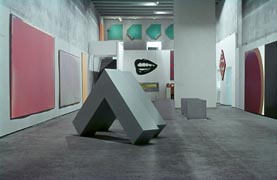 |
| Sculpture by Robert Morris, photo by Tom Wesselmann. |
Among those offering the 34 artworks or art-concepts this time out: Isa Genzken, Guillaume Bijl, Hans-Peter Feldman, Andreas Siekmann, Silke Wagner, and Martha Rosler.
Curiously, Sculpture also seems—at least in Münster—to include Videos and Open-Air Performances. What's in a Name, after all?
BREGENZ ON THE BODENSEE: Angelika Kauffmann and Some Moderns!
Celebrating Angelika Kauffmann!
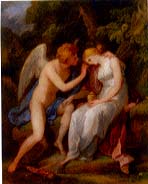 |
| Angelika Kaufman, "Amor und Psyche," 1792. |
In her time, Angelika Kauffmann was one of the most sought-after portrait-painters and she was certainly the one of the most artistically, financially, and socially-successful of artists, male or female. Kauffmann was regarded by Goethe and other Greats of the Age as "a woman of immense talent."
And yet, she is almost unknown to untutored art-lovers—despite the number of impressive Historical, Mythical, and Religious paintings and portraits of Aristocrats and Archbishops by Kauffmann in major museums.
Artemisia Gentileschi is far better known, thanks largely to the film about her life, loves, and career. Perhaps what Angelika Kauffmann needs is a Major-Motion-Picture, starring Nicole Kidman?
Born in Swiss Chur in 1741—but more like a native of the Bregenzer-Wald—Kauffmann learned to paint from her father, a traveling-artist. She learned fast, so she soon became famous in London, not only for her portraits of the Nobility, but also for her Salons, her Intelligence, her Charm, and her obvious Talent.
After a failed first-marriage in London, she moved to Rome with her new husband, also a painter. In the Eternal City, her fame and her commissions grew. Europe's most influential men—on pilgrimage to Rome—made a point of visiting her Salons and luxurious villa.
When Kauffmann died in Rome in 5 November 1807—this year is the 200th anniversary of her death—her Funeral-Procession was the most magnificent since the death of Raphael.
When she died, she left many of her paintings—she did a lot of self-portraits!—to her family in the Bregenz-area. That's one reason there are so many Kauffmann canvases in the Vorarlberger-Landesmuseum in Bregenz.
But the exhibition's resourceful and knowledgeable curator, Tobias G. Natter, has also been able to secure loans of Kauffmann paintings from museums and private-collections in London, Rome, Vienna, Florence, Munich, Krakow, Weimar, Zürich, Edinburgh, and Vaduz—from the Prince of Liechtenstein's fabled art-collection!
Indeed, there are so many of Kauffmann's impressive artworks in this exhibition that it has had to be divided between the Bregenz Landesmuseum and the Angelika Kauffmann Museum in Vorarlberg's Schwarzenberg.
The skill and sensitivity with which Kauffmann portrayed her Royal and Noble subjects—as well as orchestrating great historical-scenes on canvas—is so very special that this show should be seen more widely. Failing that, there is an impressive catalogue available. Try the museum's Website: www.vlm.at
Kunsthaus-Bregenz Showcases Beuys and Barney and Twombly and Gordon!
This past year has been an on-going celebration of the 10th Anniversary of KUB, or Kunsthaus-Bregenz. Mythos is only one of a series of important installations.
The announced Curatorial-Purpose in mounting Mythos—in Kunsthaus-Bregenz—is to bring together one "major historical position" and three Contemporary-Artists. The Artistic-Touchstone in this show is Joseph Beuys, who has [supposedly somehow] influenced or inspired the "work-statements" of Douglas Gordon, Cy Twombly, and Matthew Barney.
Each artist has been given one entire concrete-floor in the Kunsthaus. Beuys is represented by a Seminal-Work, the now dismantled Strassenbahnhaltestelle—ein Monument für die Zukunft/Tram-Stop—A Monument for the Future—which was originally exhibited with its rusted old cast-iron streetcar-pole in a standing-position, accompanied by a piece of rusted tram-track.
Now sections of the cast-iron pole—plus the track-segment—lie on the cement floor, along with four mortar-barrels and a culverin with head, mount, and crank! Actually, this is not the original tram-pole, but an iron-casting Beuys had made of the original for his 1976 Venice Biennale German-Pavilion Installation: Strassenbahnhaltestelle.
Beuys' original Venice-Installation was far more complex than what is now lying inertly on the Kunsthaus floor. Nonetheless, the KUB guide insists that these rusty pieces of iron, together, make up "one of Joseph Beuys' most important works."
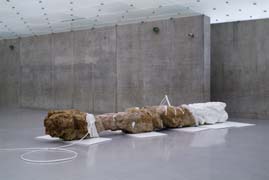 |
| Sculpture by Barney Matthew, photo by Markus Tretter. |
A Wall-Text—how would we understand the Significance of Modern Art without Curatorial-Explanations?—even suggests that this is one of the most important art-works of the 20th Century! This may well be because Strassenbahnhaltestelle "unfolds as a mythical image [Mythos!] of memory, suffering, and recognition."
It has even more importance—socially and culturally—because Beuys' "act of processing historical events, both private and collective, is turned into the symbolic incentive for the planning of a better future."
No doubt Dick Cheney and Condoleezza Rice often look at reproductions of Joseph Beuys' art-works to help them plot a better future for Muslims in the Middle-East?
Beuys? Wasn't he that gaunt German guy in the fedora hat? Or was he Belgian…
As "the crux of the works shown at the Kunsthaus-Bregenz is the Death-Theme," the quasi-Futurism of Matthew Barney's Cetacea—sprawling blobs of "a vaseline-like synthetic-material" similar to some glops seen in his fairly recent show at the Guggenheim—does not augur well for the Zukunft, let alone the Gegenwart!
Douglas Gordon's human-skull—pierced by 40 five-pointed star-shapes—certainly evokes the Death-Theme. Indeed, the Curatorial-Wisdom is that Gordon "transforms an object of death into a symbol of hope and failure." What is even more evocative is that: "It turns the exhibition-space into a sepulchral-chamber."
Actually, it looks like a ritually-pierced-cranium of some nameless-cadaver, standing alone in a plexiglass-case in the middle of an otherwise empty cement-blockhouse…
But there is more to this skull than merely meets the eye: "The forty stars stand for the artist's age and thus for the knowledge about the transience of human-existence that is preserved in mythical permanence by the artwork."
Next Question!
As for the splash and dribble "Romantic Symbolism" of Cy Twombly's twelve-panel epic, Lepanto, unless you already know about this famed Naval-Battle of 1571—in which Ottoman ships were decisively defeated—you wouldn't have a clue.
Echoing History—via American Abstract-Expressionism—in Curator-Speak: "confronts the viewer with powerful chromatic chords and a rich palette of yellow, red, turquoise and aquamarine hues, which vividly correspond to the drama of the historical events."
Only if you were actually there in the Corinthian-Gulf in 1571…
But what has Cy achieved with these dozen canvases, splotched and dribbled with bold colors?
He has been "taking the Historical-Narrative and Ancient-Mythic Theme out of the traditional Historical Period Painting Setting and placing it in a Picturesque Panorama infused with the abstractly Expressive Tension between Beauty and Death." [Caps added.]
Oh! Thanks for the Aufklärung!
Also: "The idea of the Myth extends the world of a rationally comprehensible Reality into the Supernatural and Superhuman Realm." [Caps added.]
Good to know that. But with so much empty-space left-over in Kunsthaus-Bregenz, couldn't there have been more skulls? Or maybe Jeff Koons' coffin?
Jeff Koons is very popular at Kunsthaus-Bregenz!
QWIK-STOP IN BERLIN: The Story of Berlin—Mit Original Atomshützbünker!
 |
| The Story of Berlin exhibition at Ku-Damm: The Roaring '20s. |
The former West-Berlin was already rich in museums—some effectually duplicating the historic museums left behind in East-Berlin, when it was seized by the Soviet Army of Occupation to later become Capital of the German Democratic-Republic.
When the infamous Berlin-Wall came down in November 1989, the uneasily-reunited German Hauptstadt had even more museums than it could immediately manage. Now parts of historic Prussian State Kulturbesitz collections have been moved from West to East, bringing notable artifacts back together.
In the meantime, new museums have come into being, some—like the Hamburger Bahnhof—in bomb-damaged and handsomely-restored noble buildings. Others, in impressive Post-Modernist structures…
But one unusual museum can be easily missed by tourists on the Ku-Damm, in what was once West-Berlin. This is the Story of Berlin Exhibition, which features a tour of an actual Atomic-Bomb Bunker!
From the Kurfürstendamm itself, the Museum is easy to miss. Outside a multi-purpose Mall stands a Wing of an American Airplane from the Berlin Airlift of 1949. This is the visible Signature of the actual museum inside.
But the Museum's Time-Tunnel and 23 Theme-Rooms are not just reminders of the City's hard fate in World War II. In fact, they chronicle the long, long history of this Capital of the Prussian Kingdom and the German Empire!
Not only Frederick the Great and Adolf Hitler are part of this Epic Story of Berlin, but also Konrad Adenauer, Dwight D. Eisenhower, and Walter Ulbricht—among many others.
For background, contact: info@story-of-berlin.de
ON-VIEW AT THE GROPIUS-BAU: Cindy Sherman and Scythian Gold!
As Your Scribe was only inside the Martin-Gropius-Bau to photograph details for the Berlin Film Festival's brochures, he was not able to spend time gawking at the large portraits by the ubiquitous Cindy Sherman, but she certainly seems to have excited as much interest here as elsewhere, not least for the size as well as the subjects of her self-explorations in photo-portraiture. This show is shared with Paris' Jeu de Paume, Copenhagen's Louisiana, and Kunsthaus-Bregenz!
In a larger series of galleries, Königs Gräber der Skythen was also attracting crowds. I think I must have seen this stunning show of remarkably detailed gold and silver objects recovered from Scythian Graves at the Met. Somewhere, surely…
What is especially interesting—considering the sophistication and intricacy of the designs on daggers, ritual-objects, vessels, and jewelry—is that most of these priceless creations were made from three to seven centuries before the Christian Era!
NEW IN MUNICH: Jüdisches Museum München!
The Main Synagogue in Munich was destroyed—on the orders of Adolf Hitler, whose original HQ was in the Bavarian-Capital, known as Die Stadt der Bewegung—even before almost all other German Synagogues were attacked, smashed, and set-afire on the infamous Kristal-Nacht.
In the wake of a bomb-blasted 1945, the site became a parking-lot in the heart of Historic Munich! Only a small stone monument was set up on the outer edge of the acreage—which remained the property of the Congregation.
But no attempt was made to rebuild this once grand-monument and sacred-structure. For some decades, there was simply not enough of a Jewish-Community to do this. Most Munich Jews had either been exterminated in the Death-Camps or had fled abroad.
Fortunately, a solid and prosperous Community has been developing in recent years, so that Munich once again has a Major Synagogue, plus a Jewish Museum and Culture-Center.
But these handsome and significant additions in the heart of Munich are not standing on the old Synagogue site. That was traded by the City for the new site, across the street from the Stadtdmuseum am Jacobi-Platz.
The Synagogue/parking-lot site was then sold to a giant German merchandising-chain, whose outposts are usually designated as the Kaufhof. Rather like a Deutsche K-Mart…
The imposing new Post-Modernist Synagogue has an immense rectangular base, clad with seven courses of rough sandstone, above which rises a much higher and slightly smaller sanctuary-space. The architects were the Saarbrücken firm of Wandel, Hoefer, and Lorch, which also designed the new Dresden Synagogue.
The impressive new Jewish Museum and Library also has seven courses of sandstone, but they are smooth and rise above a base that has four courses of rough sandstone. On two sides of the base, however, the exterior is a glass-wall on which are painted many comments—in various languages—about Jews: some of them merely curious; some of them ill-informed…
Entrance is made through doors in this glass-wall. Inside, there is a bookshop and other amenities. Upstairs are the exhibitions, ingeniously-devised as few artifacts survived the Pogroms and Persecutions. Nonetheless, the History of the Jews in Munich is affectingly and incisively told.
What is especially affecting is discovering how integrated they were and how important to the progress and prosperity of Munich before the Rise of the Nazi-Party, which had its Beginnings in the city.
The third major structure on Saint-Jacob's-Square is the Jüdische Gemeindehaus, which is a Culture and Meeting-center and also has a Kosher restaurant! Even more important, it houses a People's-High-School—or Volkshochschule—of the Israelitischen-Kultusgemeinde!
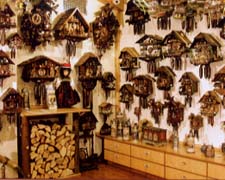 |
| Max Krug, Cuckoo-Clocks |
OLD IN MUNICH: Max Krug, Cuckoo-Clocks!
On Medieval-Munich's main-street—the Neuhauserstrasse—there is a small shop that is also a kind of museum. This is Max Krug's, the Cuckoo-Clock Specialist! The range and variety of Max's wooden clocks are absolutely amazing.
How could those old Bavarian Wood-carvers devise so many kinds of miniature Alpine-Chalets, seemingly straddling bold clock-faces, dripping iron-pine-cone weights to power the clock-works? Some Krug clocks limit themselves to a tiny door from which a wooden-bird will emerge to announce the Hour.
Others feature a balcony on which a Bavarian boy and girl take turns in coming out to indicate fair or foul weather. Or maybe you'd prefer a Witch for Stormy-Weather?
Max Krug also has an astounding Cast of Wooden Bavarian-Characters, including a Hofbräuhaus Beer-Maid. As well as jolly Schornsteinfeger-figures—Chimney-Sweeps: they are Good-Luck totems!—which might also be said of Krug's Santas.
There are revolving music-box Christmas-Scenes, as well as candle-powered Merry-go-round Whirley-gigs. But many tourists want Munich Beer-Steins, so Krug has shelves and shelves of them as well!
This is not a famous Munich Museum, but it is still a Major Tourist-Attraction. And you do not have to pay Admission—though you may well want to put down some Euros for one of Max Krug's Collectibles!
FRIEDRICHSHAFEN-AM-BODENSEE: The Zeppelin-Museum!
If you have never heard of Friedrichshafen—on the eastern shores of Lake Constance—it might be of interest to know that it not only has an ingeniously-designed Zeppelin-Museum but also that Zeppelin airships are still being manufactured here in Graf Zeppelin's factory, near Zeppelin-Field.
You can even take a ride high up over the Bodensee/Lake Constance in a Zeppelin! But it's not cheap.
This Year of Our Lord 2007 is also Zeppelin's 70 Jahre Lakehurst Anniversary. That would take us back to 1937, when Zeppelin airships made round-the-world cruises, as well as direct flights from Germany to New York, landing in New Jersey at the Lakehurst-Field.
These Old World-New World flights came to a sudden and tragic end when the Graf Hindenburg Zeppelin exploded at Lakehurst.
In the Zeppelin-Museum, you can walk through an actual-sized mock-up of the passenger-quarters of an Intercontinental-Zeppelin. The rooms and their furnishings are fine examples of stripped-down commercial Art Deco—as well as being exemplars of making maximum-use of minimal-space.
The technology of Zeppelin-travel is shown in great detail, as are drawings, models, and relevant photos. It may be a bit unsettling for some American visitors to see the Nazi Swastika so prominently displayed on Zeppelin models and photos, but Graf Zeppelin's invention was a Scientific-Advance of which the Nazis were especially proud.
Sailing Zeppelins around the world—with Gourmet-Meals ordered from specially-printed-menus—was both a Money-Loser and great advertising for the technical achievements of the Third Reich. [The horrendous V-2 Rocket came later…]
For more information, contact zeppelin@zeppelin-museum.de… Or try: www. zeppelin-museum.de
Much smaller, but also of interest is the Schulmuseum Friedrichshafen am Bodensee. You can see what German schools were like in the Medieval Period, as well as in, say, 1850 and 1936. Those were the days of the Hitler Youth, so this 1930s section is Cautionary: Never Again!
Even before the Advent of Adolf Hitler, it was necessary to Punish Naughty-Students to encourage them to do better in their Maths. One daunting method shown in the museum was to seat the student on a big Wooden-Donkey and then force him or her to wear a big cap with Donkey-Ears!
As Pres. Geo. W. Bush would say: Leave No Child Behind! What Hitler said is also On-Record here…
Friedrichshafen has recently become an International Fair and Conference Center, with some immense and impressive exhibition-halls on the fringe of the city. There is even a handsome Zeppelin-Center—with an excellent restaurant—available for public and private functions.
Your Scribe had breakfast here at an early morning radio-broadcast of local Folk-Music and interviews with such luminaries as my good friend, Gerd Alfons, Technical-Director of the nearby Bregenz Festival, which this past summer and next features a Huge Moveable Eye as the major set-piece for Puccini's Tosca, on the great Lake-Stage!
Stop-Over in Prague: Historic Churches and Monasteries as Virtual-Museums and Performance-Venues:
Devout Christians still worship in the Historic Churches and Monasteries of Prague: not as many as in the time of Good King Wenceslas—or was he Polish? But certainly more than went to Divine-Services during the 45 long hard years of Atheistic Godless Communism that oppressed what was then Czechoslovakia.
Your Scribe went off to Prague soon after the Fall of the Berlin Wall and the subsequent Collapse of Communism in Eastern Europe. But he had been able to visit its theatres—as a Western Drama and Opera-Reviewer—even during the its time as a Socialist-State.
In those dark years, what had been known for centuries as Die goldene Stadt—or the Golden City—had become incredibly shabby.
Now, in 2007, it is even more splendid than it must have been in its Great Days in the late 19th Century. Or even Between the Wars…
But it seems a bit odd to visit a dazzling baroque church more as a Museum-foray than as an Exercise in Piety. Less so, perhaps, for a Methodist, who has been raised to be suspicious of all things Popish.
Nonetheless, Concerts in such venues as the Salvator Church and St. Michael's Monastery do seem more in keeping with the original purposes of such sanctuaries. Especially in the ornate baroque Collegium Marianum hall of the former Servite Monastery, with its remarkable ceiling-fresco.
Oddly enough, there are two quite contrasting music-programs on offer at St. Michael's. One is The Best of Classic Concert Hits, featuring works by Vivaldi, Bach, Mozart, Händel, Haydn, Schubert, and Pachelbel. Most of the works are not out-of-place in a church, especially the Bach-Gounod Ave Maria.
But what is one to make of the alternative-program, The Best of World Musicals?
Is Andrew Lloyd Weber's Jesus Christ Superstar now church-ready? Other composers represented include George Gershwin, John Kander, Galt MacDermot, Fred Loewe, Jerry Herman, and Leonard Bernstein—with a suite of songs from West Side Story.
Curiously, although Mozart's A Little Night Music—that's how it is named in the program!—is included in the Classic-Concert, the Best-Musicals program does not include A Little Night Music, as imagined by Stephen Sondheim. Someone is missing a Good-Connection here!
IN WIEN: Specialist-Museums and Collections Briefly-Noted!
One of the most important Early-Modern-Addresses in Vienna is Berggasse 19. This is the site of the floor-through apartment of Dr. Sigmund Freud.
In 1971, a few rooms that had been his Office were furnished with some Freud-Memorabilia to give Post-War visitors a sense of Freud as both Man and Psychoanalytic-Pioneer. Your Scribe photographed these Interiors at that time.
Now the entire floor has been made into a Museum, evoking not only his office—until his 1938 Exile to London—but also the Family-Quarters. In addition, there are now a Scientific-Library of some 30,000 volumes, an extensive Freud-Oriented Archive, a Freudian Art-Collection—including the work of Jenny Holzer, a lecture-hall, and exhibition-spaces.
For more information, contact: office@freud-museum.at Or: www.freud-museum.at
Although the famed 12-Tone-Composer Arnold Schönberg never lived in Vienna's Palais Fanto, that is the site of the Arnold Schönbeg Center. In the Center's suite of rooms is a replica of his Los Angeles Study, as well as important Archival-Materials relating to his Life, Theories, Compositions, and even his Paintings!
The Center—open to the public—also offers lectures, symposia, workshops, and publications. The actual Schönberg–Haus in Wien-Mödling, where he lived from 1918 to 1925, is also a memorial, with exhibitions of his original instruments and Jugendstil furniture.
Although Arnold Schönberg died in Los Angeles and was initially buried there, his remains were disinterred and returned to Vienna, where the City of Vienna provided an Honorary-Gravesite in its famed Central-Friedhof, with a handsome memorial-stone, carved by Fritz Wotruba.
For more information, contact: www.schoenberg.at Or: office@schoenberg.at
Also known at the Hofmobiliendepot—or Imperial-Court Furniture-Depot—this unusual museum-venue for display of furniture and furnishings created for the Habsburg Court, when resident in the Hofburg, Schloss Schönborn, or other Imperial-Residences, this past summer mounted a special-exhibition to celebrate the 25th Anniversary of the death of Austro-German film-actress Romy Schneider.
When only in her teens, Romy Schneider had won stardom in a set of films about the tragic Austrian Empress Elizabeth, known from childhood as "Sissi." In Sissi, die junge Prinzessin and Sissi, die junge Kaiserin, Imperial Court Furniture was used to dress the movie-sets, so the Hofmobiliendepot was on firm ground in mounting this show, after all!
Not only were some 70 bandw photos of both the young and more mature Romy on view, but the Möbel Museum also showed three of the Sissi film-costumes!
The photo-series began in 1956, just the time when Your Scribe arrived to teach in Europe, as well as to see all the Sissi films and become a big Romy Schneider fan. In fact, when Austrians or Germans asked where I had learnt to speak German so well, I always answered: Ich habe Alles im Kino gelernt. Von Romy Schneider…
For more information, contact: info@hofmobiliendepot.at Or: www.hofmobiliendepot.at
Spiel mit Technik is on view at Vienna's Technical-Museum until mid-November, so you still have a chance to see this unusual show of Vintage and Modern Mechanical and Electronic-Toys. You might even be allowed to remote-control a Robot-Toy, although now you can do that in the Privacy of Your Own Home!
The mechanisms on view cover a time-line of 250 years, reaching back into the Era of the Baroque. An elaborately-decorated baroque-treasure from 1760 is a Writing-Machine that emerges from an elegant globe.
From 1850, there is a Bird in a Gilded-Cage. Wind the key in the base and he sings and flutters his wings!
For more information, contact: www.technischesmuseum.at
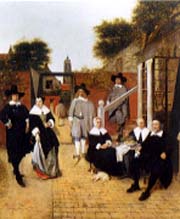 |
Gemäldegalerie der Akademie der bildenen Künste Wien:
This is the prestigious Painting-Academy that rejected the eager young water-colorist applicant, Adolf Hitler. Had the short-sighted Professors admitted him, the History of the World might have been rather different…
Nonetheless, you can now see what he missed-out on: strolls in its corridors and studios to study some 300 Old-Master paintings from the 15th to the 19th centuries!
This is not the famed Künsthistorisches-Museum-Wien, where the famous Old-Masters far outnumber this collection. But you won't see such masterpieces anywhere else: Hieronymus Bosch's triptych of The Last Judgment, as well as canvases by Rembrandt, Titian, Rubens, Tiepolo, Guardi, Ruisdael, Jordaens, and Van Dyck!
For more information, contact: www.akademiegalerie.at Or: gemgal@akbild.ac.at
Österrechische Nationalbibliothek: Prunksaal:
If you thought National Libraries were only filled with books and manuscripts, think anew! In Vienna, the Austrian National Library contains many treasures from the Habsburg-Imperium—sometimes known as the Danubian-Monarchy—definitively destroyed in the wake of World War I.
Currently, in its Ceremonial-Hall, an ornate baroque reception-chamber, it is presenting Geschenke für das Kaiserhaus, or Gifts for the Imperial-House. This collection of elaborately decorated Huldigungen—Dedicatory-sheets: Greetings or Salutes—to Emperor Franz-Joseph and Empress Elizabeth—fondly known as "Sissi"—are often enclosed in richly ornamented scroll-rolls, handsomely inlaid or embossed book-like-covers, and even golden-chests, as is the Memorial of the Emperor's visit to the Czech Skoda-Works in 1905.
[For the Record: The once-lovely, but increasingly reclusive Empress Elizabeth was stabbed to death by an Italian-Anarchist, as she was boarding a steamship on Lake Geneva. It was almost a mistake: he had intended to assassinate someone else, but missed his opportunity and didn't want his day to go to waste…]
Some of the finest modern Huldigungen were crafted by Otto Wagner and Kolo Moser, as well as Jugendstil artists of the Wiener-Werkstätte.
These Greetings and Salutations arrived for Imperial Birthdays, Anniversaries, Weddings, and Jubilees. Sometimes they were heart-felt tributes from Loyal-Subjects, even from far-flung corners of the vast Austro-Hungarian Empire. Others—especially those from corporations, banks, or ambitious individuals, wishing preferment at Court—were an early form of Lobbying!
For more information, contact: www.onb.ac.at
BEYOND THE VIENNA-WOODS: Stift Kloster-Neuberg and the Essl-Museum!
Kloster-Neuberg: Where Heaven and Earth Meet; Faith, Wine, and Culture on Vienna's Doorstep!
Just outside Vienna—strikingly sited above the River Danube—is the great Monastery and Palace-Complex of Kloster-Neuberg. With so much to see in the heart of Vienna, many tourist art-lovers unfortunately miss this amazing treasury of Art and Architecture.
In fact, Your Scribe—who has known Historic-Vienna in-depth since the late 1950s—had never seen Kloster-Neuberg until this past August, when a dear friend, communications-expert Walter Zeller, arranged an outing to this remarkable Landmark and to the nearby Essl Museum.
From a distance, the immense twin-towered cathedral-like Monastery-Church, the large tracts of Monastery buildings, and the uncompleted domed vastnesses of what was to have been Holy Roman Emperor Charles VI's "Austrian Escorial" look like a small city.
Actually, there's a very good reason few have recently experienced the Kloster Neuberg Foundation's various attractions—which include its Vinicultural Tours. Until 2006, the ancient church and the Imperial Apartments were undergoing extensive Restoration and Preservation.
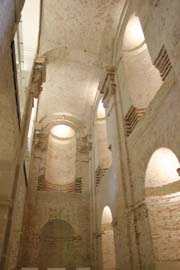 |
| The Chamber of the Giants, the Sala Terrena, at Kloster-Neuberg, Vienna. |
In 1114, the Margrave Leopold III—who had newly moved his ruling-seat to Neuberg—began construction of the great Monastery-church. Married to Agnes, the daughter of the German Emperor, he planned to make this the largest church in the land, as befitted his status as an Imperial Son-in-Law.
It was soon given into the care of Augustinian Canons. In 1485, Leopold was canonized as Saint Leopold, so the Abbey-Church became a Pilgrimage-Shrine—which it remains to this day.
The Austrian-Habsburg Emperor Charles VI decided, in 1730, to create a great Imperial Residenz, attached to the existing Church and Monasteries. His idea was to make this the Austrian-Equivalent of the Spanish-Habsburgs' immense Palace and Monastery in Toledo, El Escorial.
One of the wonders of this grand Palais was to have been a great entrance-hall, with figures of Giant-Atlantes supporting its dome. These looming sculptures are in place today, but the chamber was never completed, as Emperor Charles died in 1740, and his heir had no interest in completing the work as planned.
[Now and then, there were Costly Wars to fight, despite that old saying about Austria-Felix: "You, happy Austria, wed!" The idea being that if a Habsburg married into the Royal-Houses who otherwise might attack him, War could be avoided. And barrels of Coin-of-the-Realm saved!]
From a distance—and even more so, close-up—one of the most impressive aspects of the Complex is the immense copy of the historic Charlemagne's Crown as Holy Roman Emperor. This sits squarely atop the dome over the chamber of the Giants, the Sala Terrena.
With the re-opening of the Kloster Neuberg Complex, three major tours have been devised for tourists: the Imperial Tour—including the Marble Hall and the splendid Imperial Chambers, the Sacred Tour—with the Monastery-Church and its many treasures, and the Vinicultural Tour, notable because the Monastery has been making wine for over 900 years. This is, in fact, the Oldest and Largest Winery in all Austria!
Remarkable Medieval, Renaissance, and Baroque interiors and artworks are on view. Notable is the famed 1181 Verdun Altar, with its astounding fired-gilt enamel-plaques of Saints and Holy-Scenes. On the verso of this altar are the first large painted-panels north of the Alps.
There is also a large Seven-Branched Candelabra, from the 1130s, from the same workshop that crafted the famous bronze-doors of Saint Zeno, in Verona.
Saint Leopold was a Babenberger—succeeded by the Habsburgs, when the Babenberger-Line died-out—so there is a great Babenberger Family-Tree on view, created during the process of Canonization.
Other wonders include the Altar of the Albrecht-Meister in the Sebastiani-Chapel—this shows the first pictorial representation of the Stephans-Dom in Vienna. From the 1300s, are the figures of Jesus and Apostles from the Capella Speciosa.
Then there's the precious Ivory-Collection, a feast of Medieval and Renaissance paintings, plus the paintings Egon Schiele made of various sites in the Complex, bought by the Abbey from Schiele himself!
Restorations and enlargements of public exhibition-spaces are continuing. By 2010, the Treasury and other galleries will be open.
The Abbey's Foundation also provides a year-round program of Cultural-Events: a chamber-version of Beethoven's Fidelio was on view in August. Considering its fine wines, there are even possibilities for events and celebrations in parts of the Complex.
If you are a Roman-Catholic, you could also have your baby baptized or your son married in the great Abbey-Church! Protestants have to make Other-Arrangements, of course…
For more information—or if you are planning a trip to Vienna in the future—contact Klosterneuberg Abbey: www.stift-klosterneuberg.at
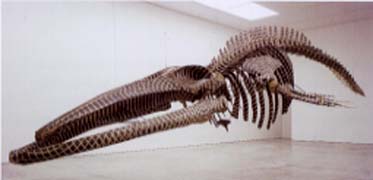 |
| Gabriele Orozco's Dark Wave, 2006, is featured in the catalogue of the 35th Anniversary of the Essel COllection. |
Essl Museum's Kunst der Gegenwart!
On the western-edge of the town of Klosterneuberg, the Essl Museum is also Not-To-Be-Missed! Karlheinz Essl is the immensely successful founder/magnate of Austria's version of Home-Depot. His everything-you-need-for-building is called bauMAX.
Interestingly enough, Essl met his wife and art-collecting-partner, Agnes Schömer in New York, way back in 1959! By 1972, they had begun collecting important new artists from at home and abroad, being especially attentive to nourishing young Austrian talents.
In 1987, bauMAX's handsome Post-Modernist HQ—named the Schömer-Haus, after Essl's wife—was opened. Today, its public-areas, dominated by a four-level rotunda, are crammed with works of Modern Art. Although its offices are bustling with business, the rotunda and corridors serve as a public art-museum.
This complements the Essl Museum—opened in 1999—where the major collections are on rotating view. Although there are now more than 6,000 paintings, sculptures, and drawings in the Essl Collection, currently only 400 artworks by some 160 artists are displayed in the Museum. These represent talents from all over the world, including China and the Antipodes.
This is the 35th Anniversary of the Essl Museum, which—as the Schömer-Haus—has been designed by the ingenious Austrian architect, Heinz Tesar.
The Anniversary-Exhibition is titled Passion for Art—which certainly describes the Essls. Its Theme-Rooms include: Zeit im Bild, Kreis Saal, Raum der Stille, Déjà Vu, Farb Rausch, Gallery Sex, Home Sweet Home, Witz Trotz Kunst, Sound of the Wave, Natur Raum, Körper Existenz, and Animalsdream.
Among the Names on view: Gabriel Orozco, Hermann Nitsch, Sam Francis, Paul McCarthy, Martin Kippenberger, Damien Hirst, Sigmar Polke, Jake and Dinos Chapman, and the late Jörg Immendorf.
Agnes and Karlheinz Essl's talented son, Karlheinz Essl jr, is a very avant-garde composer, so one chamber is devoted to an artwork that combines his music with a complementary art-structure from which his music emerges. This is called Von Hirschen und Röhren, a "Sound-Installation," devised by Beat Zoderer and Essl.
There are also special concerts of New Music "of international reputation that is unparalleled in Austria."
Not only are there Art-Education Programs and Performance-Events, but you can also rent spaces in the Museum for parties and special-events! Perhaps even the entire museum for a really unforgettable Enchanted-Evening…
The Essl Museum Programs-brochure even offers "a tailor-made offer for your event."
For more information, contact: www.essl.museum.at or info@essl.museum.at
VARIETY IN FESTIVE SALZBURG: Baroque, Rococo, and Modern Share the Stage!
 |
| Ewald Mataré, Eule, 1963-1964. |
Dom-Museum zu Salzburg: Ewald Mataré in Salzburg:
If the name of the wonderfully gifted Modern sculptor, Ewald Mataré, is not well-known in the New World, that may be because so much of his work was commissioned for German and Austrian Churches and private European collectors—who recognized his genius in the 1920s, long before his artworks were suppressed by the Nazi Kultur-Police.
In the era of the Modernist simplicity-of-form distinctive to Jugendstil and Art-Deco, Mataré went even further in smoothing-out the details of Animal and Human Forms. His Grosse Liegende Kuh of 1930, Laurende Katze of 1928, and Grasende Kuh II of 1930 are extremely streamlined reductions of actual animal-forms.
With the rise of the Nazi-Party and its 1933 Seizure of Power, Ewald Mataré soon was dismissed as Professor of Sculpture at the Düsseldorf Academy of Art. His sleek sculptures rapidly disappeared from German Museums. His bronze image of the Laurende Katze was included in Hitler's infamous Degenerate-Art Exhibition.
Like Josef Stalin, Adolf Hitler preferred a form of Socialist-Realism. Fortunately for Mataré, he had enough admiring private-collectors who still wanted his works, as well as significant church-commissions, which led him to work increasingly on religious-subjects.
With the collapse of the Third Reich in 1945, Mataré was soon restored to his Düsseldorf Professorship. His church-commissions also increased. In later years, one of his most outstanding students was the late Joseph Beuys.
Today, some of the most fascinating—as well as deceptively simple—bronze church-doors in Germany are the work of Mataré. For instance, his Bishops and Popes Doors for the Cologne Cathedral is an amazing combination of molded bronze images and fired enamel-mosaic inserts. He also created the Himmelsfahrtstür for St. Lambertus in Düsseldorf, as well as a powerful Last Judgment for a chapel in Bad Honnef.
But the immediate purpose of the new exhibition of the art of Ewald Mataré in Salzburg's Dom-Museum is to celebrate both his creation of two door-panels for Salzburg's great baroque Cathedral and his 100th Anniversary.
The Mataré Salzburg Cathedral-doors—one set of three great entrances to the Dom, alongside panels by Manzu—is named The Door of Hope. As they remain in place downstairs from the Museum, life-sized photo-reproductions are on view in the actual exhibition.
It would be a blessing if this show could travel to the New World, so more art-lovers—as well as pious church-goers—could come to know and love Mataré's remarkable Vision of Humanity. And also how he saw their Cows, Cats, and Owls!
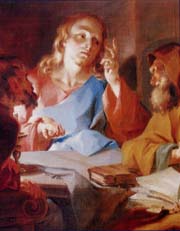 |
| Paul Troger, Christusbei Nikodemus, 1739, at Salzburg Cathedral-Museum. |
Dommuseum zu Salzburg: Wunderkammer and More!
In addition to such special shows as the Ewald Mataré exhibition, the Salzburg Cathedral-Museum maintains a more or less permanent exhibit of historic baroque sculptures, powerful religious paintings, richly-embroidered robes, golden-reliquaries, and ritual-objects from its extensive collections.
Among the Cathedral's treasured paintings is Hieronymus Bosch's curiously Surreal—even terrifying—Temptation of St. Anthony, from 1500.
But even more [bizarrely] impressive is the 17th Century Wunderkammer of Salzburg's Prince-Archbishops. All kinds of Natural-Curiosities are on display. If that long spiral of ivory looks like a Unicorn's Horn, four-hundred years ago some Cardinal may well have believed that it really was just that. Actually, it's the Horn of a Nahrwahl, a creature seldom seen in the seas today…
Salzburger Barockmuseum: Versailles—The Gardens of the Sun-King!
Anyone who has been to Versailles recently may find it difficult to imagine that this splendid complex of Palaces and Gardens was once a Marshland, only used by King Louis XIV for hunting-parties. But, after 1661, he decided to have his Hunting-Lodge transformed into the greatest Palace of all Europe.
And he commissioned grand Formal-Gardens from Le Notre to match the Chateau's splendors. Le Roi was so taken with what his designers had wrought that he commissioned a series of 24 oil-paintings to be made of the Gardens, to be hung in the Grand Trianon.
Smaller Gouache-copies were made by Jean Cotelle [1646-1708] of some 21 of the actual paintings. But, over the centuries, all but 15 of the original 24 had vanished.
That over half of them have finally been brought together again for the collections of the Palace of Versailles is especially valuable, as they show the Gardens in the time of Louis XIV, not as they subsequently developed during the reigns of the Sun King and King Louis XVI.
And what a wonderful opportunity to study Cotelle's on-loan gouaches in the Baroque-Museum of the Baroque Gardens of Salzburg's Mirabell Palace! [Would the Versailles Curators consider loaning them also to the Frick Collection in Manhattan? That would be a coup!]
Salzburg's Barockmuseum has as its founding-core the fine collection of Kurt and Else Rossacher, insightful searchers for sketches, drawings, and studies for Baroque-Masterworks, some of which are now lost, with only the studies as testimony to what was once a great painting or sculpture. Among the artists on rotating-view—in addition to special-shows such as the Versailles gouaches: Giordano, Rubens, Tiepolo, Bernini, and Rottmayr.
[Baroque-Note: In the Diocesan-Museum of Sankt Pölten, there is also a Baroque-Exhibition, on view until the end of October. This is Grandezza: Der Barokmaler Daniel Gran. The occasion of this show is the 250th Anniversary of Gran's Death-Day.
[Daniel Gran's work may not be so well-known outside Austria, for his greatest commissions were grand frescoes for such equally grand-spaces as the Prunksaal of the Austrian National Library and the Marmor-Saal of Kloster-Neuberg, both mentioned above!
[Toward the sunset of his life, Gran moved from nearby Vienna to Sankt Pölten, where he continued to execute masterful frescoes. Among them were murals for the Choir of the Cathedral of Sankt Pölten, under which he is buried!
[While Sankt Pölten is certainly nearer to Vienna than to Salzburg, it is also worth a visit for its profusion of Jugendstil Façades and Interiors, verging on Art-Deco styles!]
Salzburg's Residenzgalerie: Die Schöne und das Ungeheuer!
The Salzburg Prince-Archbishops' palatial Residenz has a remarkable Permanent-Collection of Masterworks, but its Galerie also mounts special shows, notably for the Summer Festival Season. The current Beauty and the Beast exhibition continues until 4 November.
This show's curators have noted that the French/Italian fairytale that inspired the more popular version of Beauty and the Beast—the one that has made millions for Walt Disney Enterprises as both stage-musical and movie—was initially inspired by the Love-Affair of Cupid and Psyche.
As the visual-premise of the show is the strong contrast between the Beautiful and the Ugly in artistic-representations over the centuries, this seems a bit odd, for both Cupid and Psyche are usually depicted as very attractive. Even if some images of Cupid/Eros are just this side of Kinder-Porn…
But then Love Is Blind, so perhaps Cupid's sightless-eyes could be seen as a Visual-Deformity, a form of abhorrent Ugliness?
Artists and Patrons of the 17th and 18th Centuries were fascinated by these contrasts, which are still compelling today. Or so argue the show's curatorial-experts.
Even if True-Beauty is really inside—where it cannot easily be seen or sensed—these Outward-Contrasts still have Visual-Power, suggesting pairings of Appearance vs Reality, Desire vs Rejection, Devotion vs Contempt, Good vs Evil.
Whatever… Die Schöne und das Ungeheuer is ingeniously mounted in a series of elegant chambers in the Residenz. Contrasts are also shown between artworks, as well as in individual paintings and sculptures!
Among the Artists on-view: Pablo Picasso, David Teniers, Alfred Kubin, Alfred Hrdlicka, Arnold Böcklin, Marc Chagall, Lovis Corinth, Hendrik Goltzius, Jan Fabre, Claude Lorrain, Pierre Prud'hon, Eugène Delacroix, Francesco Goya y Lucientes, Daniel Spoerri, and Hannah Höch!
Quite a Team!
MdM MÖNSCHBERG and RUPERTINUM: Jan Fabre, Sammlung Mahjong, and Klimt to Krystufek!
The Multi-talented Multi-tasking Flemish artist/director Jan Fabre was very much the Flavor of the Month this past August at the Salzburg Festival. Not only were his avant-garde-artworks featured in venues of the Museum der Moderne, but the ageing Belgian enfant-terrible was also commissioned to create an immense Performance-Piece for the Festival's vast Felsenreitschule venue.
This New Work—which required some 150,000 white flowers to be strewn about the super-wide stage for every performance—was titled Requiem für eine Metmorphose. Your Scribe was unable to see it, as he had already departed for the Edinburgh Festival before Fabre's World-Premiere.
Fortunately, Austria's premiere theatre-magazine, Die Bühne, revealed in advance that the stage would be like a Riesen-Friedhof, or Giant-Cemetery! Fabre's Art-Theatre-Concept was to show Historic Moments in Recent History—from 9/11 through the Iraq-War to Saddam Hussein's Death on the Gallows.
Well, you get the Idea. Nothing about Darfur at all…
Salzburg's Museum der Moderne prides itself on having two venues: One is carved into the living-stone of the great Mönschberg which looms high over the Old City. This replaces the historic and much-loved Café Winckler, but Time Marches On…
Actually, the creation of the concept of the Mdm—incorporating the older Rupertinum, down below in the historic city-center and across from the Grossesfestspielhaus—was probably sparked by Thomas Krens' concerted, but locally-rejected, efforts to install a Salzburg Guggenheim-Museum inside the Mönschberg—which would have had to be partially hollowed-out for this US-Inspired Wonder!
Until Mid-November, the Mdm Mönschberg will be showing Mahjong, Chinese Contemporary-Art from the Swiss Samlung Sigg. Considering the current Old-Master prices being paid for some of these bland contemporary Chinese jests on Socialist-Realism-Propaganda, some of them ought to be marginally more interesting than they seem.
[Your Scribe has purchased some colorful—but anonymous—artworks by obscure Chinese-farmers on various journeys into the heart of Red China. Who knows what they may be worth some day?]
MdM RUPERTINUM: Klimt to Krystufek + Jan Fabre: The Invested Time!
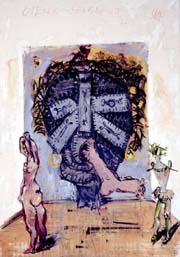 |
| Markus Lüpertz, Otello Selbdritt 2., 1996. Museum der Moderne, Salzburg |
Meanwhile, down in the historic town of Mozart and Max Reinhardt, not only Jan Fabre is on view. Selections from the MdM's Permanent-Collection have been marshaled into the KK show: Klimt to Krystufek
The Rupertinum's holdings are divided into Images of People and Landscapes. These represent primarily Austrian Artists of the 20th and 21st Centuries. Auguste Rodin's La figure volante—presaging Modernism—is not exactly Austrian, but then neither is J-M Basquiat, who is also in the show.
Others on view include Hubert Schmalix, Markus Lüpertz, Siegfried Anzinger, Peter Pongratz, Werner Otte, Otto Dix, Fritz Wotruba, Maria Lassnig, Lyonel Feininger, Erich Heckel, Anton Faistauer, Jean Egger, Heinrich Campendonk, Ernst Ludwig Kirchner, Richard Gerstl, Oskar Kokoschka, Egon Schiele, and of course Gustav Klimt, with his landscape, Litzlberg am Attersee!
In sum, this is quite a cross-section of images, the People understandably more interesting than the Trees.
Curiously, the Mdm Rupertinum's quarterly-program renders his show—Die verliehene Zeit—in English as The Invested Time. The Xerox-copies outlining the artworks for the Press, however, translate the German title more exactly as The Borrowed Time.
The various sections of this wide-ranging survey of Jan Fabre's Performance-Art productions, art-installations, and artworks demonstrate his many facets, with set-models, sketches, and photos of actual productions with his own ensemble.
As with Austria's very own Egon Schiele, Jan Fabre shows an unhealthy fascination with the Lower-Openings of the Human-Body in some fairly detailed sketches. His photos of various sites and structures, however, are quite different.
Some of Fabre's own photo-images are both haunting and troubling. Some others seem self-indulgent… But production-photos made by Robert Mapplethorpe and Carl De Keyzer are special.
As the great Art-Deco hulk of the disused Power-Station on the South Bank of the Thames stood silent and abandoned, the American actor/director Sam Wanamaker—who was then beginning construction on what would become Shakespeare's third Globe-Theatre—had some interesting ideas how this immense structure could be saved and used by the local community of Southwark.
Sam passed-on before he was even able to complete the Globe, so he was never able to implement his plans, one of which was to create Art-Galleries, as well as Performance-Spaces, in the vast interior of this noble Landmark.
Fortunately, London's Tate Gallery was over-flowing with Modernist Art-Works. Rather than consign them to unseen-storage, how about showing them in a re-conformed Power-Station?
And that is why London and the World now has the Tate-Modern!
Unfortunately, in the Tate's haste to gut the historic structure for museum-exhibitions, the immense electric-turbines in its even larger Turbine-Chamber were removed. It would have been a rather daring Salute to Modern Engineering-Design to have left at least one—if not All—of them in place!
As a result of this visual-voiding of the Romance of 20th Century Technology, the Tate's Curators have been left with an Immense Empty-Space that is very difficult to fill with any kind of memorable Art-Construction or Installation that can hold its own with this vast Space-Envelope.
Inflating the Scale of a suite of already Banal Constructions may indeed make the Turbine-Chamber seem Less-Empty, but it does not guarantee an Unforgettable-Experience for Art-Lovers.
Louise Bourgeoise's immense Spiders certainly filled up the Space, but they looked more like giant-props for a cinema-version of HG Wells' War of the Worlds…
When Your Scribe passed through in late August, this void was Between Shows. What was either going-up or coming-down did not look able to Command the Space.
Luckily, the Permanent-Collections were reward enough, plus three special exhibitions!
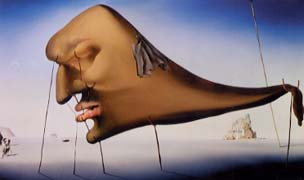 |
| Salvadore Dali, Sleep, 1937. |
Not only were many Salvador Dalí canvases and some provocative sketches on view in the Tate's tantalizing exploration of Dalí's interest in films and film-making, but viewers also were able to see two of the most famed early Art-Films, Luis Buñuel and Dalí's Un Chien andalou and L'Age d'or—or The Age of Gold.
Dalí's collaboration with Alfred Hitchcock on Spellbound—with Ingrid Bergman and Gregory Peck—was also explored, with opportunities to see clips from the actual film. Despite Dalí's extended imaginings for a Surreal Dream-Sequence, only three-minutes survived in the film's Final-Cut.
The bizarre Catalan artist also entered a collaboration with Walt Disney, but his images were deemed too extreme for Disney's usual audience. This came to nothing…
Fascinated not only with cinema, but also with Hollywood, Dalí became friends with the Marx Brothers. But his scenario for a Marx Bros. film—Giraffes on Horseback Salad—never got off the page.
Clearly, some of Dalí's more distorted imagery—not least the sexually-inflected images—were surely seen as too strange, too extreme, too threatening for Hollywood's All-American Audiences.
With this Dalí Cinema-Oriented Retrospective, museum-visitors could be again reminded of Dalí's peculiar genius as a painter, sculptor, and designer. As well as to discover his almost-Secret-Life as a would-be art-film-maker, beyond Chien andalou and that eye-ball, sliced open by a sharp razor!
This show ought to be seen at MoMA…
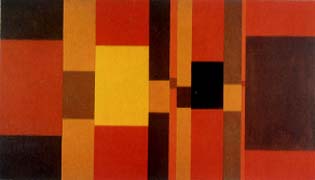 |
| Hélio Oiticica [Untitled], 1956. |
Hélio Oiticica: The Body of Color
You may already have seen a colorful geometry-inspired painting, construction, or sculpture by the late Brazilian artist, Hélio Oiticica—who died way back in 1980—but only one of is works cannot possibly prepare you for the visual-onslaught of several rooms full of his inventive genius.
Oiticica's way with solid-color rectangles and squares, in various often-simple conformations, was unique, yet familiar: "Gee, I could have done that if I'd thought of it!" Well, no: You didn't and you couldn't…
Once again, this show ought to be seen at MoMA…
Hockney on Turner Watercolours
David Hockney's name is clearly a device to arouse interest in viewing some 150 of JMW Turner's moody, atmospheric 19th Century Watercolors from the Tate Gallery's collections. There are no complementary Hockney Watercolors hanging beside the Turners.
What you get from Hockney—aside from his selections of Turner's early watercolors from the Tate's Archives—are some comments on the Master's Techniques, supposedly set down by a Modern Master.
MoMA and the Met Museum now use the same device to excuse getting some Good Stuff out-of-storage. And why not? Cooper-Hewitt has even asked a Silicon-Valley corporate-entity to make choices from the Permanent-Collection!
At the Tate Modern—on view until February 2008!—you can enjoy such early Turner-Impressions as Lake Como, Venice: San Giorgio Maggiore—Early Morning, Heidelberg, Küssnacht, Lake of Lucerne, and The Blue Rigi, Sunrise.
Copyright © Glenn Loney 2007. No re-publication or broadcast use without proper credit of authorship. Suggested credit line: "Glenn Loney, Curator's Choice." Reproduction rights please contact: jslaff@nymuseums.com.
Return to Curator's Choice Table of Contents